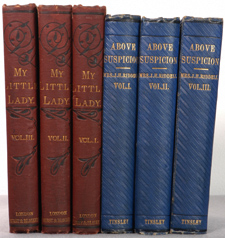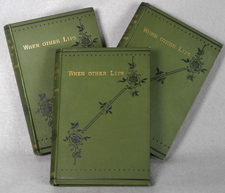Building Cornell University Library’s Collections
Victorian Fiction

In the 1990s Cornell University Library began purchasing novels by minor Victorian women writers in lots of 200-300 titles. Though forgotten today, many of these novels were wildly successful in their own time. Cornell’s rare book collection now holds more than 2,000 of these titles, including many not found in any other American research library.
These fictional works provide scholars with the raw materials required for the exploration of multiple historical and literary questions. They allow us to trace the emergence of new genres of popular fiction, such as the “new woman” novel, the “sensation” novel and the early detective novel. They record the entrance of women into the literary marketplace in unprecedented numbers, and provide important physical evidence about how nineteenth-century books were designed and manufactured.
Novels of the Victorian era in fine condition have become increasingly difficult to locate. Preserving them while they still survive strengthens our ability to understand the Victorian period, now and in the future. Thanks to the Cornell Class of 1956 Rare Book Endowment Fund, students and scholars have exceptional access to a growing collection of literary works of the Victorian era, enhancing Cornell University Library’s spectacular collections on English and American literature from the sixteenth century to the present.
Class of 1956 Rare Book Endowment Fund

The Three-Volume Format
From the early 1800s until the 1890s, most full-length works of new fiction were published in three volumes (often called a “three-decker” or “triple-decker”). The market for the three-volume format was driven in large part by giant subscription circulating libraries, such as Mudie’s and W. H. Smith, which operated much like our video rental stores today.
In the 1880s, for example, novels were expensive. At thirty-one shillings and sixpence for three volumes (about £1.60), they were beyond the reach of most readers. Circulating libraries favored the three-volume format-and pressured publishers to adhere to it-because the high price of triple-deckers encouraged readers to borrow rather than buy.